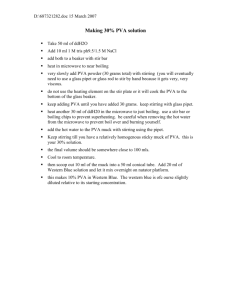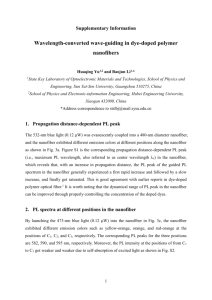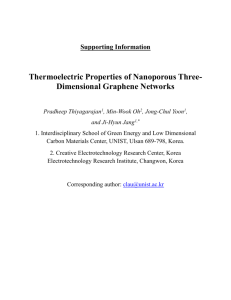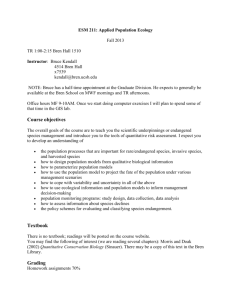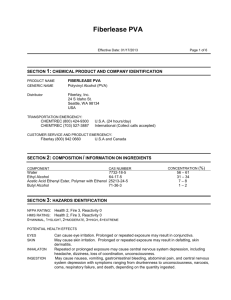Supplementary Information (doc 3149K)
advertisement
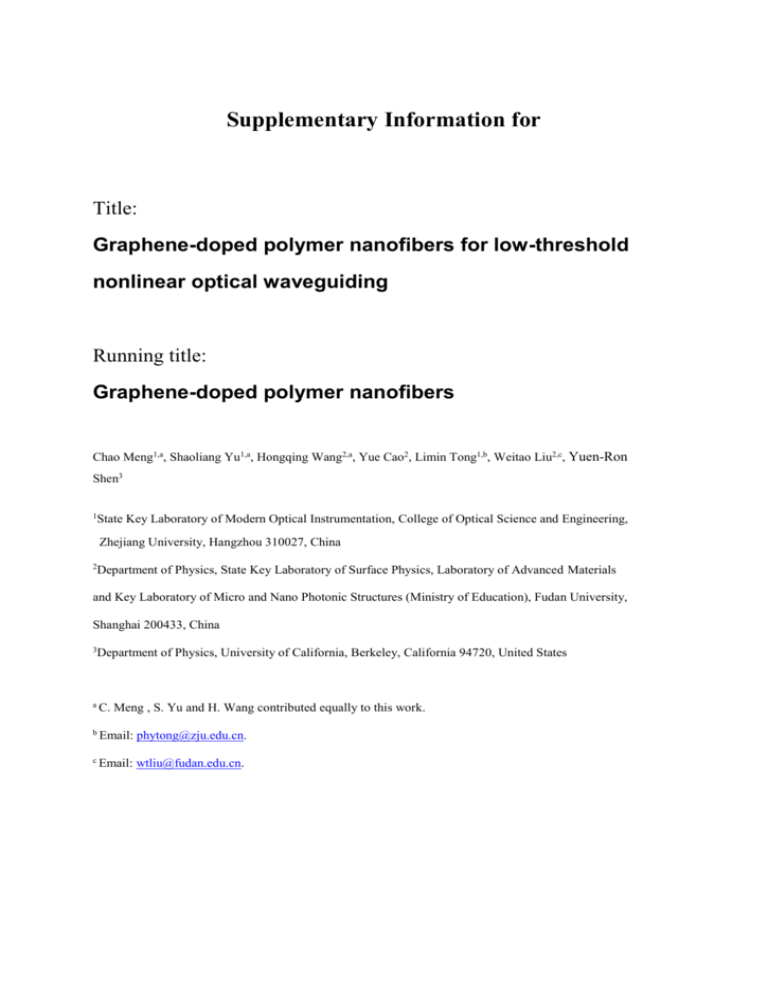
Supplementary Information for Title: Graphene-doped polymer nanofibers for low-threshold nonlinear optical waveguiding Running title: Graphene-doped polymer nanofibers Chao Meng1,a, Shaoliang Yu1,a, Hongqing Wang2,a, Yue Cao2, Limin Tong1,b, Weitao Liu2,c, Yuen-Ron Shen3 1 State Key Laboratory of Modern Optical Instrumentation, College of Optical Science and Engineering, Zhejiang University, Hangzhou 310027, China 2 Department of Physics, State Key Laboratory of Surface Physics, Laboratory of Advanced Materials and Key Laboratory of Micro and Nano Photonic Structures (Ministry of Education), Fudan University, Shanghai 200433, China 3 Department of Physics, University of California, Berkeley, California 94720, United States a C. Meng , S. Yu and H. Wang contributed equally to this work. b Email: phytong@zju.edu.cn. c Email: wtliu@fudan.edu.cn. Chemicals Graphite flakes and Sodium deoxycholate (SDC, Mw ~414.56, 98%) are purchased from Sigma-Aldrich and Aladdin Chemistry (China), polyvinyl alcohol (PVA) is purchased from Alfa Aesar. All aqueous solutions were prepared with 18.2 MΩ deionized water. Characterization SEM and TEM images were taken with ZEISS Ultra-55 scanning electron microscope and JEOL JEM-1230 transmission electron microscope, respectively. Raman spectra are measured using RENISHAW InVia Raman Microscope. UV-VIS-IR absorption spectroscopy of graphene aqueous dispersions, PVA and G/PVA films is measured using UV-3150 UV-VIS-IR spectrophotometer (SHIMADZU). Micromanipulation and near filed coupling of nanofibers and fiber tapers are carried out under an optical microscope (ZEISS Axio Imager. A2m). Fiber-taper-assistant evanescent coupling When two parallel subwavelength waveguides are closely contacted, the guiding light in one waveguide can be coupled to the other efficiently because of high fractional overlap between mode fields of two waveguides.1 Here, we use tapered optical fiber probes to coupling light into and out from the G/PVA nanofiber. The fiber taper, with tip sizes of hundreds of nanometers, is drawn from standard optical fiber (CORNING SMF-28e). Since the tapered fiber probe is directly connected to the standard optical fiber, the evanescent coupling scheme provides perfect connection between nanofiber and outer fiber system. Optimization of G/PVA nanofiber length for optical modulation The absorption coefficient of typical waveguide-type 650-nm-diameter G/PVA nanofibers at 1550-nm-wavelength is 0.069 dB/μm (0.0158 μm-1). According to the equation I=I0exp(-αL), we first plot linear transmittance of G/PVA nanofiber according to different G/PVA nanofiber length in Figure S7 (black solid line). Furthermore, we theoretically estimate the modulation depth ((Tmax-Tmin)/Tmax) with different G/PVA nanofiber length. For example, if the saturable absorption induced differential absorption coefficient change (Δα/α) is about 0.3, which is deduced from the experimental results in Figure 4b, According to the equations Tmin=exp(-αL) and Tmax=exp(-(α-Δα)L), we can plot another curve in Figure S7 (blue solid line), which implies the modulation depth corresponding to different G/PVA nanofiber length. In addition, absolute transmission change (Tmax-Tmin) with different G/PVA nanofiber length is also shown in Figure S8 for clarity. In Figure S7 and S8, we conclude that G/PVA nanofibers with 50-μm to 100-μm length are suitable for practical applications because in these conditions the G/PVA nanofiber are easily to achieve a moderate modulation depth while maintaining reasonable linear transmittance. Figure S1. TEM images of LPE graphene. Figure S2. Absorption spectrum of (a) diluted graphene aqueous dispersions, G/PVA and pure PVA films and (b) G/PVA films with different graphene concentration. Figure S3. SEM image of one nanofiber knot assembled using a 450-nm-diameter G/PVA nanofiber. Figure S4. Optical spectrum of fiber-coupled white light source from a halogen lamp. Figure S5. Optical microscope images of nanofiber. (a) near field coupling of a fiber taper and a nanofiber in air, (b) a pure PVA nanofiber waveguiding an incoherent white light, (c) a pure PVA nanofiber waveguiding a 1064-nm-wavelength CW laser light, (d) a G/PVA nanofiber waveguiding a 1064-nm-wavelength CW laser light. The scale bar in (a) is also applicable to (b,c,d). Figure S6. SEM image of the laser-induced damage area of single G/PVA nanofiber. Figure S7. Cross-sectional power distribution of an 800-nm-diameter nanofiber guiding (a) 1549-nm, (b) 1437-nm and (c) 1350-nm wavelength light. The calculated fractional power inside the fiber are 0.68, 0.73 and 0.76 for 1549-nm, 1437-nm and 1350-nm wavelength light, respectively. Figure S8. Theoretical optimization of G/PVA nanofiber length for optical modulators. Nanofiber-length-dependent linear transmission of waveguide-type single G/PVA nanofibers (black solid line) and modulation depth (blue solid line). Figure S9. Nanofiber-length-dependent linear transmission of waveguide-type single G/PVA nanofibers (black solid line) and absolute transmission change (red solid line). Reference 1 Huang KJ, Yang SY, Tong LM. Modeling of evanescent coupling between two parallel optical nanowires. Appl. Opt. 2007; 46: 1429-1434.

